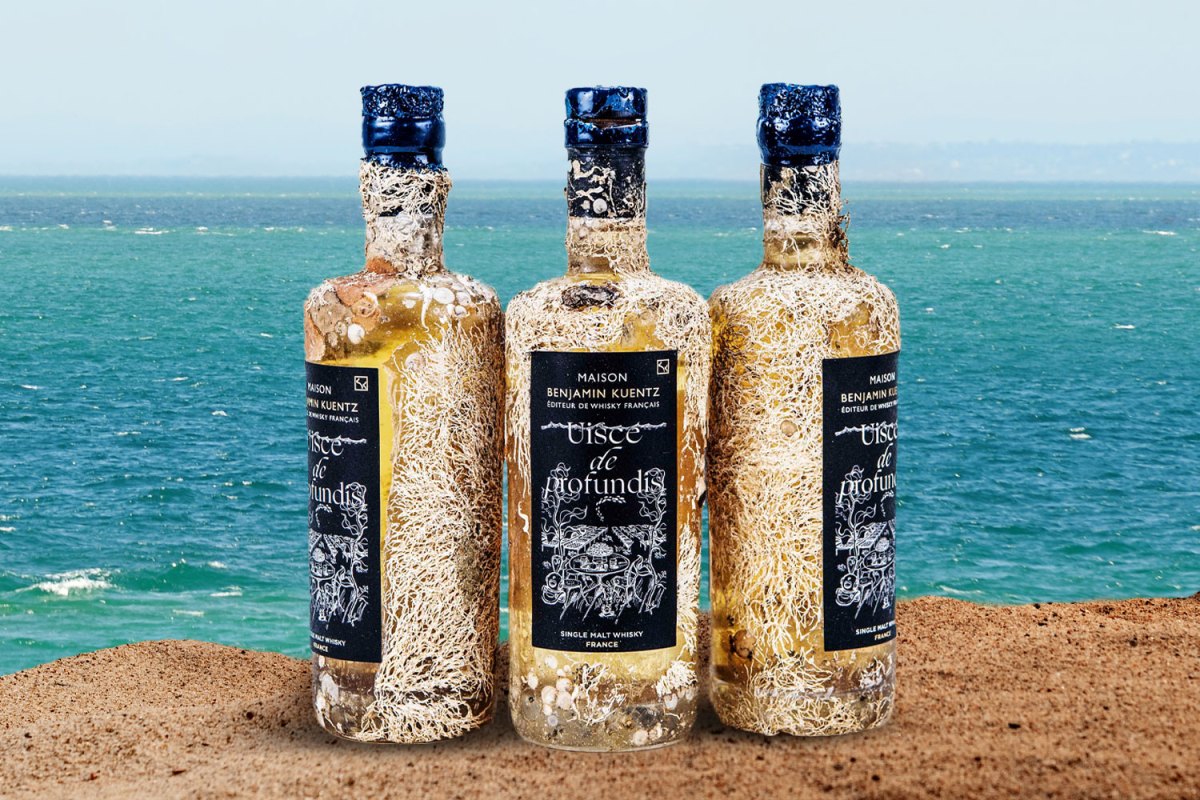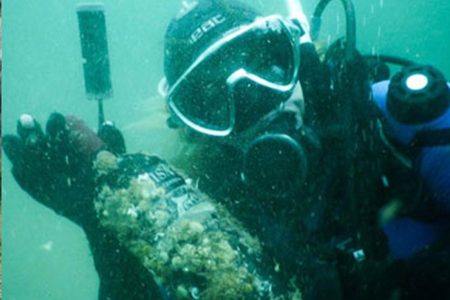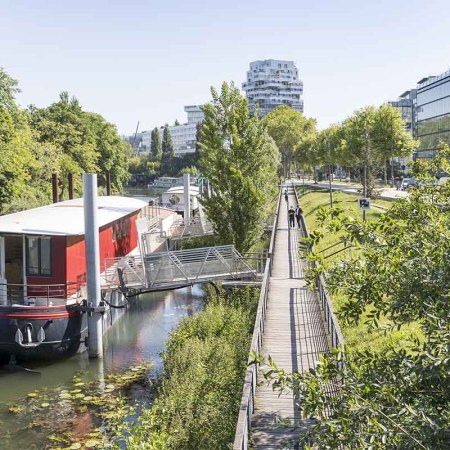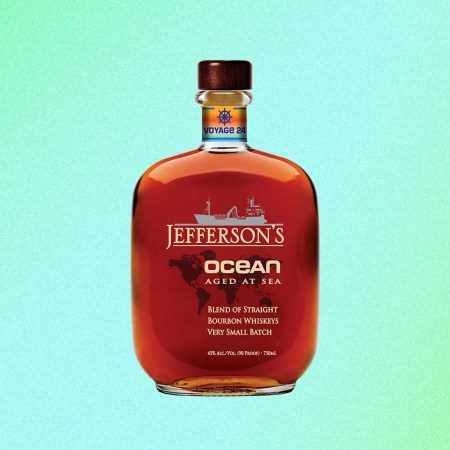Off the coast of the island of Ouessant, metropolitan France’s westernmost tip, lies a deep-sea treasure trove. Rather than a shipwrecked fortune of golden coins and jewels spilling out of chests buried in the seabed, this is a modern-day bounty: barnacle-clad bottles of Maison Benjamin Kuentz’s Uisce de Profundis, an amber-gold whisky, waiting for the right moment to be brought back to land.
“It feels straight out of Twenty Thousand Leagues Under the Sea — and I’m Captain Nemo,” says Benjamin Kuentz, the owner of his eponymous whisky house. As we talk by telephone, he’s busy scraping souvenirs of the ocean floor off his latest haul. He’s careful not to remove too much, however (“we keep some of the ocean spirit on the bottles because that’s all part of the experience”).
Kuentz is, as far as he knows, the only person in the world aging whisky underwater. In fact, he now has two different single malts (made in partnership with two separate distilleries in France) at the depths of the ocean: Uisce de Profundis, aged in bottles, and Millésime Aquae, aged in barrels.
Now, aging spirits at sea is nothing new. Norway’s LINIE Aquavit crosses the equator twice as part of a four-month stint on a container ship. Then there’s Jefferson’s Ocean Aged at Sea, a sea-aged bourbon that claims to be “darkened by pounding waves, caramelized by Equatorial heat and kissed by salt air” on a similar cargo ship journey.
There’s a difference between a liquid circumnavigating the globe on a container ship and actually resting on the ocean floor for an extended period of time, however. And, as underwater wine transitions from a novelty act to a match for Michelin-star dining, driven by restaurants like Mauro Colagreco’s Mediterranean Sea-inspired Côte d’Azur address, CETO (see below), it’s hardly a surprise that spirits are the next underwater frontier.
An Underwater Wine Aging Experiment Is Showing “Stunning” Results
An Argentinian winery has been aging Malbec bottles off the coast (literally)At the encouragement of producers aging Champagne on the seabed off Ouessant, Kuentz first trialed a batch of ocean-aged whisky in 2017. Not sure what he’d meet when the bottles were pulled back up a year later, he admits to being greatly surprised. “I discovered a new aromatic profile that I found greatly pleasing.”
Uisce de Profundis, he explains, is a “gastronomic whisky.” As he explains: “It’s not a whisky to drink neat.” Comparing it to a dry white wine (petit chablis is the style he names), Kuentz’s ideal food pairing is a platter of fresh oysters, preferably from France’s windswept western coast.
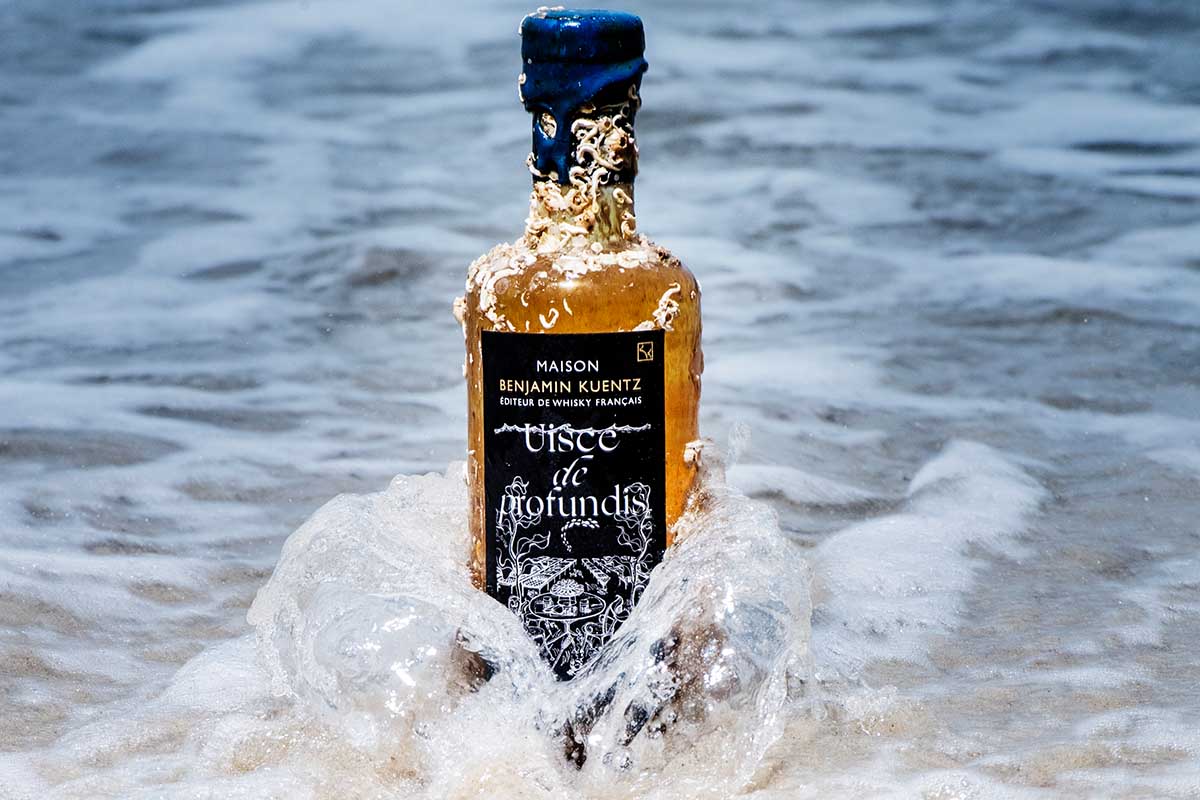
“When you drink it, you really have an impression of being outside, on a boat ride or a surfing session,” he says. “You’re transported somewhere else.”
Each year, he sends 1000 bottles 65 feet below sea level, where they remain for 11 months. Each bottle is closed in a wax seal, before being placed in an individual case and then grouped together in a large cage with grills to allow the water to flow through. The strong currents and tides of the area ensure continuous movement.
Only half of that figure ends up on the market, with exploding corks from the pressure-filled environment the main culprit. Kuentz has accepted that wastage goes with the territory — and is a worthwhile compromise for the delicate, liqueur-like whisky that emerges from the process.
Securing an allocation of his whisky has also become highly prized. More than 600 miles away, at the diagonally opposite end of the country, Victor Bigot covets his magnum of Uisce de Profundis. “It’s only one of only four Kuentz has made,” Bigot says.
The Chef Sommelier at Ceto, Argentinian Chef Mauro Colagreco’s top floor Michelin-starred restaurant inside the recently opened Maybourne Riviera above Monaco, describes Uisce de Profundis as the “must-try” on a drinks list that features still and sparkling underwater wines from France and Spain to match a menu rich in local fish.
“For someone who loves whisky, it’s something different,” Bigot explains. “It’s very crisp and dry, but also very floral and fruity.” There’s also the tell-tale salinity on the palate, the characteristic he looks for in any underwater-aged drink he lists.
A 10ml serve accompanies the second dish on Ceto’s degustation menu: aged tuna matured on site. “The tuna is quite soft and fat so it’s nice to start with something a little stronger and saltier to wake up the palette,” he says.
While crowded with wine, Champagne, whisky, cognac and a rum, France’s Atlantic seabed is not the only deep sea cellar: in the Caribbean Sea, Cayman Spirits Co’s Seven Fathom Rum ages at depths of 42 feet (or seven fathoms) off the coast of Grand Cayman.
For co-founder and co-owner Walker Romanica, the ocean was the answer to a question many spirits producers ask: how to agitate the barrel to provoke superior aging results? “It’s a concept that’s prevalent across the industry,” Walker explains. “I’ve even come across distilleries who play rap music in the warehouse to shake the barrels.”
The combination of Romanica’s dive experience and his business partner Nelson Dilbert’s drinks industry background, coupled with their island location, led the duo to the water. The method has been finessed with every batch submerged. “When we started out, the barrels were directly exposed to the water,” he explains. “While there was a certain degree of seawater penetrating through the wood, the biggest problem was the disintegration of the metal hoops holding the barrel in shape.”
Today, a large sleeve protects the barrels from the water. And, while it means drinkers are less likely to pick up saline hints in the glass, they are able to appreciate typical oak flavors, from tobacco to coffee, whose development has been accelerated by the agitation, which brings more of the liquor in contact with the wood than if the barrels were lying static. “There’s no change in the color or texture, but we get a deeper character from the barrel-aged underwater in a shorter time than you otherwise would,” Romanica says.
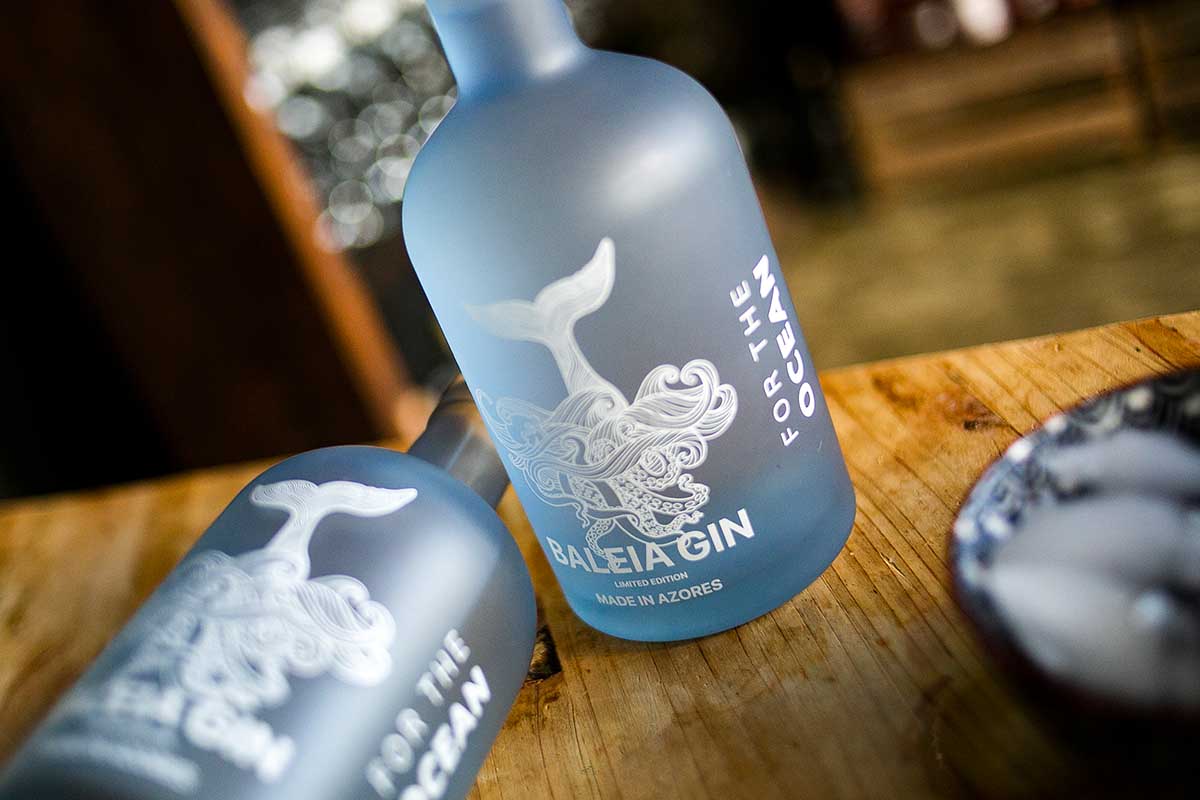
Although still in its infancy, the category is making waves around the world. Later this year, the first bottles of Baleia Gin will be taken to the seabed off the Azores, Portugal, by divers who have purchased them. “(They) will remain on the seabed for up to two years, spending, on average, 12 months collecting barnacles,” explains Baleia Drink’s founder Ali Bullock. The intention is that the original owner will then return to retrieve them. If not, the bottles will be auctioned off for charity.
(For those who don’t want to go to such depths for their gin and tonic, Bullock serves up the drink inside his Gin Library bar, home to Europe’s largest gin collection, inside his soon-to-open sustainable boutique hotel, Solar Branco Eco Estate.)
Along with ingredients such as juniper and citrus, the gin is made using seaweed sourced from the island — although that infusion still occurs on land, in the distillery.
Every Thursday, our resident experts see to it that you’re up to date on the latest from the world of drinks. Trend reports, bottle reviews, cocktail recipes and more. Sign up for THE SPILL now.
